Musicarta Twelve-bar Piano Styles
'Big Band Swing' - piano solo
The Big Band Swing piano solo tackles head-on the business of playing and accompanying yourself at the same time.
Here is the teaching video, with the in-picture MidiPiano performance.
If you prefer, here is the audio performance file.
This module assumes you know, by ear at least, the duet version of the Big Band Swing number – and have hopefully played it with somebody, or played along with the audio or MIDI performance files.
The solo performance is essentially the secondo player ‘filling in’ for a missing primo soloist – so the secondo part is the one you need to know best.
Tackling the problem
Your task is to merge three of the total four duet staves into a two-handed version. A sensible first step therefore is to transpose the melody down an octave.
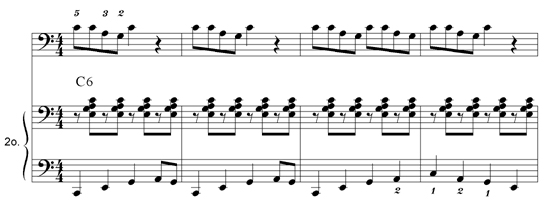
The melody has been written in the bass clef (as well as being transposed down), so you can see that it fits within the span of the right hand secondo chord.
Find the melody in its new location.
Then you think about melding the melody and the right hand chords in their new location, with the fingering you will be forced to use.
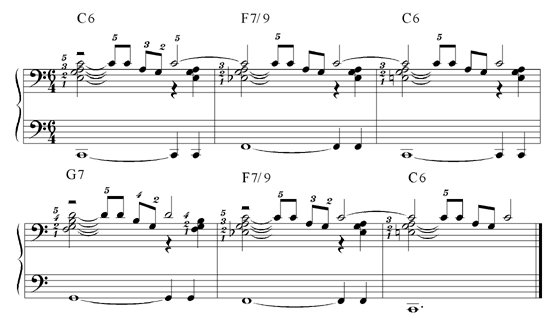
The chords are ‘tied into thin air’ (they shouldn't be!) to indicate that you try to keep as many keys down as long as possible. The MidiPiano performance of the exercise shows this clearly. (This exercise is not intended to be played in rhythm.)
Developing legato finger style
Pianists-in-training should constantly work at their legato keyboard touch. Legato is Italian for ‘linked’ – like the links of a chain. Useful teaching analogies (here, at least!) include wine gums in a packet (all jammed up against each other), and the runners in a relay race handing over the baton – if you drop it, you’ve lost!
At its extreme, legato touch passes into “If it’s not being played, it stays down”, or ‘sticky fingers’ keyboard technique. You can practice your Hanon like this. You wouldn’t play like this, but it’s a good way of developing legato finger style.
Here's a short demonstration video.
A solo 'starter' version
Play a simplest-possible version, with only the most convenient chords.
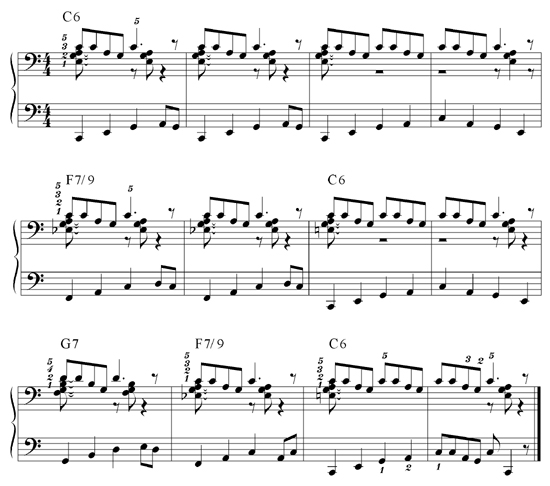
Other melodic phrases
You will also want to think closely about how you will play the Type 2 and Type 3 melodic figures.

These are advanced fingerings for quite a mature hand. The RH little finger (RH5) slides off the D sharp/E flat (same key) either up or down. You can’t hold as many keys down here – especially not the thumb.
If you can’t manage these patterns, don’t despair - there are lots of things you can do with just Type 1 and 4 patterns!
The full performance
Then, ‘all you have to do’ to complete the performance is to learn to play more and more of the secondo right hand chords without losing your priority melody.
This actual-performance MidiPiano Piano Roll view screen-shot shows how the accompaniment chords get ‘thinned out’ quite a lot – but the ear forgives this.
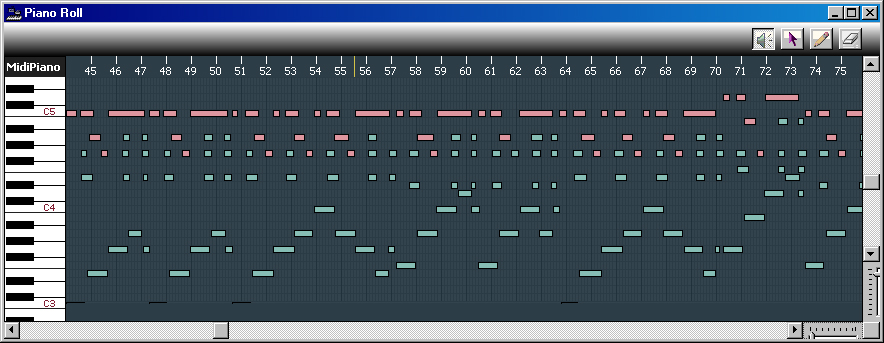
Self-accompanying like this is an intuitive skill which builds up over time. You don't really think about it - and written-out music is as likely to hinder you as to help. Many repetitions and a (self-) critical ear will, however, definitely work.
Overflow videos
|
OUT NOW! |
THE MUSICARTA BEAT & RHYTHM WORKBOOK At last! An effective approach to keyboard rhythm & syncopation skills. Learn more! |
ONLY $24.95! |
TWELVE-BAR |
The MusicartaA methodical approach to keyboard syncopation for
|
PUBLICATIONS
exciting keyboard
creativity courses
CHORDS 101
WORKBOOK

~HANON~
video course

Musicarta
Patreon
PENTATONICS
WORKBOOK
video course

Creative Keyboard
video course

BEAT AND RHYTHM
WORKBOOK
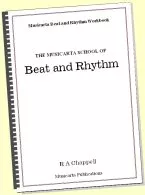
- Volume 1 -

12-BAR PIANO
STYLES WORKBOOK
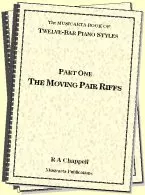
MUSICARTA MODES
WORKBOOK
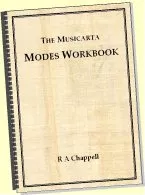
PIANO STYLE
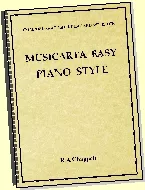
CANON PROJECT
video course
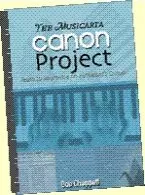
VARIATIONS
video course
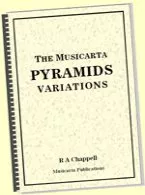
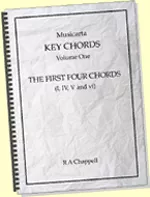
- Piano Solo -
video course
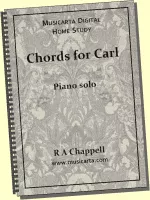
- Piano Solo -
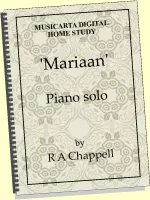

YouTube playlists





 THE LOGO
THE LOGO
